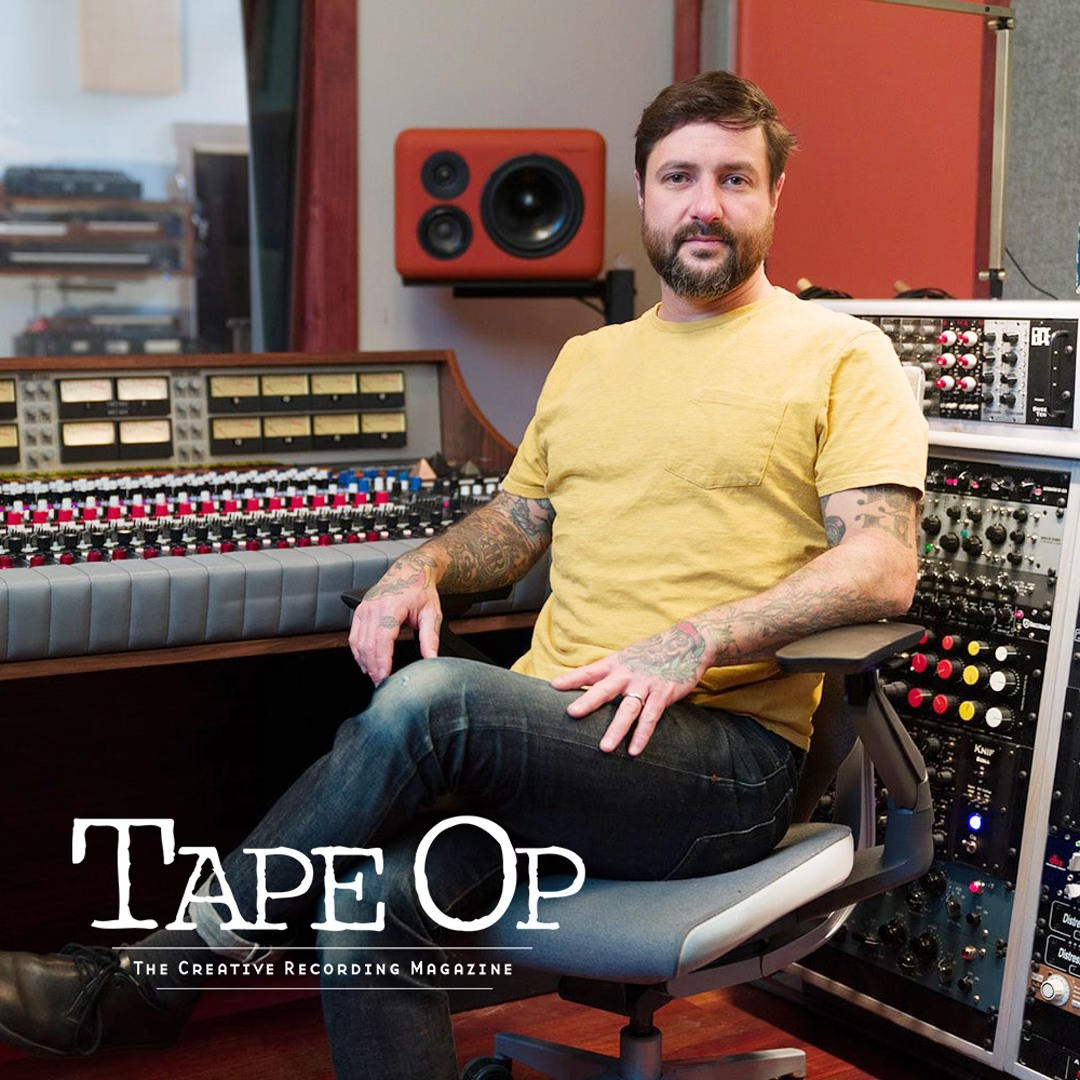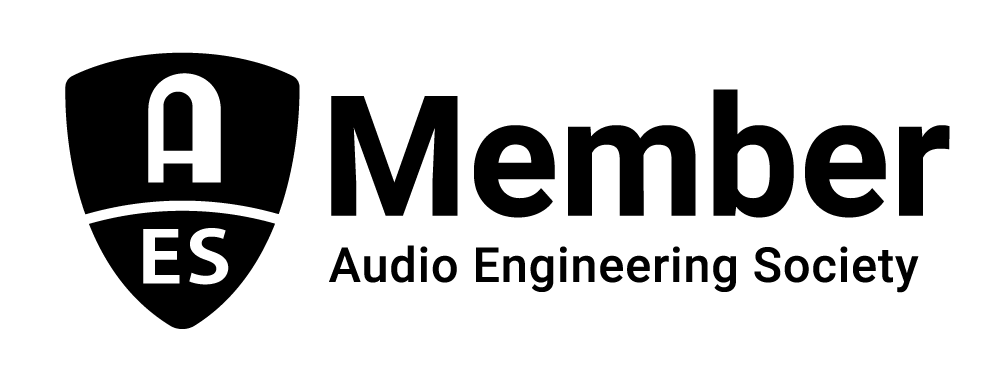In 2002, during an internship at Electrical Audio in Chicago [Tape Op #87], I was introduced to Bowers & Wilkins hi-fi (consumer) bookshelf speakers being used as studio monitors. Working on them in Electrical’s Studio B was the first time my mixes translated well. I scored a secondhand pair for my studio (Russian Recording) in 2003 and used them to make records for the next 20 years. They are effortlessly clear, pleasant to listen to, and offer excellent stereo imaging while serving as an accurate reference. They also have a pretty decent low end extension for such a small speaker, although I eventually supplemented them with an active subwoofer to fill in the bottom octave below 40 Hz. I’ve used the 805s to work on over 2,000 records, but not without a bit of guesswork. Although my room was decently balanced, it wasn’t perfect. Running out to the car to reference my mixes was a regular part of my workflow. I eventually decided to see what else was out there; maybe I was missing out on a better monitoring experience.
I ended up auditioning a new, expensive, well respected modern 3-way system side-by-side with my B&Ws. I spent hours setting them up and calibrating them to my room. After switching between the new speakers and my 805s two or three times, I was dizzy with anxiety over how dramatically different they sounded. How could they sound so wildly different, even after bypassing the room correction? It really freaked me out, so I packed them up, shipped them back, and pretended it never happened. I’ve worked on other upscale monitors like the ATC SCM25As [Tape Op #101] and SCM150 SLs. And while I enjoyed listening on those beautiful speakers, I still wished I was using my 805s in my room to do my best work.
In late pandemic 2022, my pal Scott Iulianelli and I considered launching a boutique audio marketing and distribution company, which led us to Telegrapher Loudspeakers based out of Istanbul, Turkey. On a Zoom call, their CEO Erce Kaslioglu and designer Emre Telci showed us their classy looking 3-way midfield active monitor called Gorilla, designed over five years to be a top-of-the-line studio reference monitor in the same class and price point as ATC’s. The monitors are 100% analog, with just a power switch, a choice of XLR and RCA input, and a Standby mode switch. The elegant look of the speaker, paired with the no-frills approach, indicated that this was a well-conceived monitor with particular attention to sound and performance rather than bells and whistles. The Gorillas use an 8.5-inch rigid aluminum woofer, a 4.5-inch paper cone mid driver, and a 2.5-inch tweeter powered by three Class D amplifiers in a sealed acoustic suspension system. The Gorilla is nearly flat from 35 Hz to 20 kHz and claims to have the fastest low-frequency transient response of any speaker on the market.
I was asked to audition the Gorillas and share my thoughts with the company. When they arrived, I first noticed that the build quality was on another level, even for a $9,000 plus pair of monitors. Each Gorilla weighs about 50 pounds and has a slick automotive-grade paint job. I set up the Gorillas side-by-side with my 805s, auditioning back and forth for a few minutes. I then switched back to my 805s for 15 seconds one last time before switching to the Gorillas for good. The mix came into focus without sounding like a different set of speakers or causing me to question my sanity. The upper midrange clarity and well-defined soundstage were the first things I noticed – every instrument and sonic element could be pinpointed in the stereo field. The Gorillas shared the musical touch of the B&Ws, but with a clarity I’d never heard before. The low frequency extension and articulation were especially impressive.
I mastered two records on the Gorillas that day, mixed a record on them the next week, and got halfway through mixing a second record when Telegrapher told me the speakers were heading to another studio. I had to switch back to my 805s for the first time in weeks, and immediately started the process of ordering a pair of Jaipur Orange colored Gorillas. About a year later, I became the first proud owner of a pair of Telegrapher Gorillas in the US.
These speakers taught me that my control room had more acoustic potential than I realized. After positioning the Gorillas on stands in proper midfield position, I took acoustic measurements in my room (with and without my subwoofer). Emre reviewed the data and discovered the subwoofer was causing frequencies below 120 Hz to stick around for close to a second or more, dramatically reducing clarity. My room’s RT60 measurement was better with the sub off, but the low frequency response was choppier. Emre convinced me to ditch the sub and worked with me to address my room’s issues by designing a tuned membrane and low frequency diffusor.
After we built and installed this three-foot deep floor-to-ceiling bass trap and diffusor, the improvement in clarity and low frequency balance was unquestionable. Due to my fear of the placebo effect, it took me weeks to bring out the measurement mic and REW (Room EQ Wizard) measurement software. The test results looked like they supported what I was hearing, but I wanted Emre to confirm this. His response was, “You have made such an impressive work, there is very big improvement on the sound. A huge clarity difference and your final RT60 is really good, almost flat at 240 ms (from 20 Hz to 20 kHz), not easy to achieve this. This is so fantastic, a person that knows will love to see this – you can proudly share this graphics. Science says you did a good job” The reality is that Emre did a good job.
While they are very pleasant to listen to for long periods of time, the Gorillas are incredibly flat monitors, making them ideal for critical listening in mastering and mixing applications, but they might not “impress” clients with that 3-dimensional magical zing that some other expensive studio monitors tend to have. Because of their sealed acoustic suspension system, they can only move so much air, which is the trade-off for impeccable low frequency extension, directionality, and transient response. Don’t get me wrong, they go way louder than I’d ever want to listen, but I know engineers that like it to hurt. Another important thing to note is that the Gorillas are mid-fields and perform best when they are at least 6 to 7 feet from listening position. Telegrapher just announced their two-way near-field speaker, Fox, which boasts the exact same ruler-flat frequency response down to 45 Hz (compared to Gorilla’s 35 Hz), which is pretty damn impressive for 2-way design with a 5.5-inch woofer.
The Gorillas have had the most noticeable influence on the quality of my work over any other studio upgrade in 25 years of recording. I find myself learning, expanding my skillset, and improving my craft with a renewed sense of excitement. I’m discovering new ways to use old gear. I haven’t checked a mix in my car in months, and I’ve never been happier or more confident with my work.
Read the original article at Tapeop Magazine


